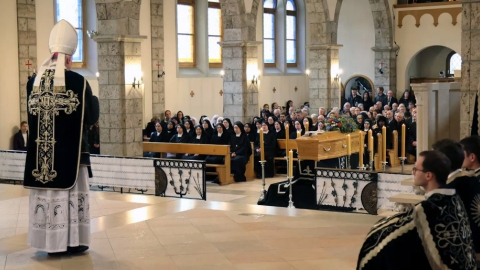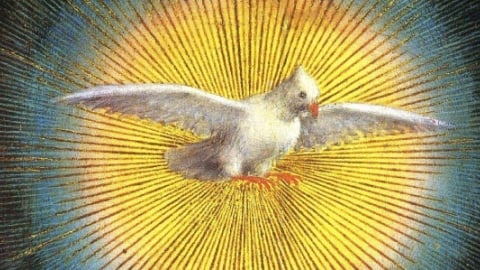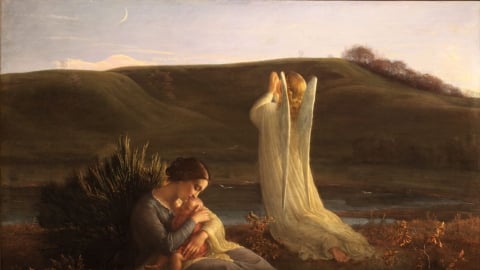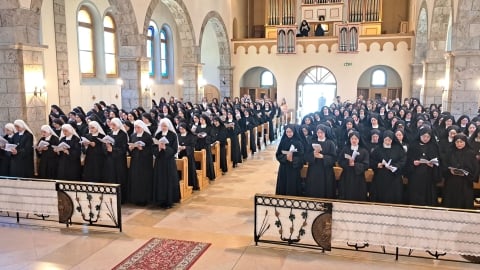The Didache: Introduction, Origin, and Rediscovery

The Didache, sometimes called “The Lord's Teaching Through the Twelve Apostles to the Nations” in reference to its opening line, is a first-century document governing Church order and one of the oldest catechetical texts in Christendom. Though lost for centuries, the text maintained a muted existence through indirect citation and quotation in other Christian writings before a nearly complete text of the work was discovered in the 19th century. This series explores the origins, contents, and enduring importance of the Didache.
The Origins and Context of the Work
Scholars, as they are wont to do, disagree on the precise dating of the Didache, with some placing it as early as 40 AD and most agreeing it is a first-century text composed in Greek. To the extent the text exhibits evidence of prior editorial activity, parts of the work are certainly early in origin. As for the work’s geographic origin, scholars have hypothesized the work emerged in the context of an early Jewish Christian community, perhaps located in or around Syria, though there is no consensus on this point. What is clearer, however, is that the text reflects concerns with how Gentiles would be received into the early Church without necessarily taking on the entirety of the Jewish Law.
The Didache also exhibits a strong Jewish religious antecedent in its embrace of the so-called “two ways tradition” whereby one path through life leads to darkness/death and the other light/life. Numerous passages in the Old Testament reflect this line, such as Deuteronomy 30:15-19:
See, I have set before thee this day a choice between life and death, between good fortune and ill. Thou art to love the Lord thy God and follow the path he has chosen for thee, to hold fast by all his commandments and observances and decrees, if thou wouldst live and thrive and prosper through him in the land that is to be thy home. If thy heart becomes estranged from him, so that thou dost no longer obey him, but art tempted away into worshipping other gods and doing them service, then I warn thee here and now that it will be thy ruin; the land thou art winning for thyself on the other side of Jordan will be thine only for a little. I call heaven and earth to witness this day that I have set such a choice before thee, life or death, a blessing or a curse. Wilt thou not choose life, long life for thyself and for those that come after thee?
After the coming of Christ, this tradition was subsumed into a number of early Christian writings, including the Didache, the Doctrina Apostolorum (“The Teaching of the Apostles”), and the Epistle of Barnabas, where light/darkness imagery becomes more pronounced. Consider the following from Barnabas 18:1-2.
But let us turn to another area of knowledge and teaching. There are two paths of teaching and authority, the path of light and the path of darkness. And the difference between the two paths is great. For over the one are appointed light-bearing angels of God, but the other angels of Satan. And the one is Lord from eternity past to eternity to come; but the other is the ruler over the present age of lawlessness.
The Didache itself opens with the following: “There are two ways, one of life, the other of death, and between the two ways there is a great difference.” As will be discussed in subsequent parts of this series, the way one chooses determines whether one becomes a participant in the Church and redemption or remains on the dark path that leads only to death. Acceptance of the way of life is confirmed through baptism, concerning which the Didache offers explicit instructions concerning in its seventh chapter.
A Work Thought Lost to History
Despite its importance to the early Church, the Didache faded from mention over the course of the first millennium. Through painstaking textual work, modern historians have been able to find numerous mentions to the book in ancient lists of canonical books, quotations in the Church Fathers, and references in Church orders composed in later centuries. Citations to the Didache were also present in Byzantine Christian works as late as the 14th century, though it is doubtful these authors had access to the full text. In the Christian West, the book was all but lost to history, its contents having been incorporated into or supplanted by Latin canons and catechetical texts.
While the Didache’s existence was widely accepted in the 19th century, it was not until 1873 that the Greek Orthodox Metropolitan, Philotheos Bryennios, discovered a 120-leaf manuscript in the Monastery of the Holy Sepulcher located in Constantinople. Completed in 1056 AD by a copyist calling himself Leon the Notary and Sinner, the volume contained numerous ancient works, including a nearly complete copy of the Didache. Subsequent investigatory work by historians unveiled another early (albeit incomplete) text of the Didache, this one written on parchment leaves of a miniature codex that was finally published in 1922. Scholars have dated this version of the text to the fourth century.
Without dwelling too long on the minutiae of text criticism and scholarship, further manuscript discoveries in other languages have allowed for a complete (though sometimes contested) text of the Didache to be restored, thus further opening access to the principles and practices of the early Catholic Church for contemporary Christians.
Further Exploration
In the forthcoming parts of this series, the Didache’s contents will be explored in detail, particularly its explication of “the two ways” and the sacraments of baptism and the Eucharist. Rather than approach the Didache as an antique curiosity best left to academics hunched over manuscripts, this series seeks to unveil the text as a foundational document in the life of the Catholic Church, one which contains instructions that still inform its mission bring souls to Christ and the fulness of the Truth.





